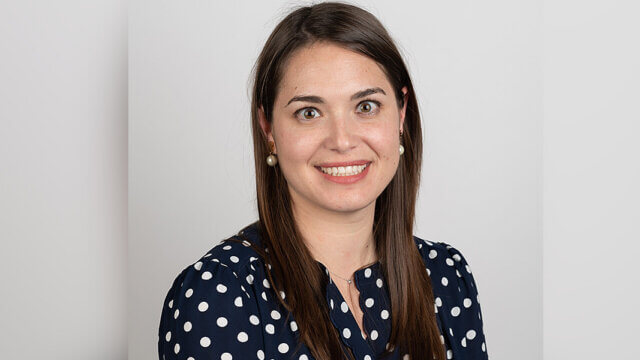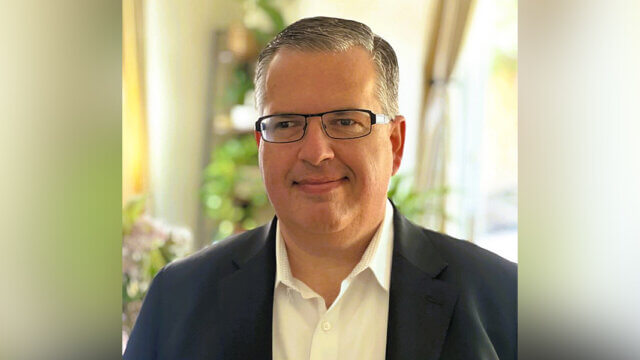By Judi Kieffer
As designers, we naturally look for ways to solve problems that come up in the environments we live in and professionally serve. It’s been no different since COVID-19 began to impact all of our worlds. We began to look for ways for hospitality brands and franchisees to make their environments safe for guests — while minimizing the impact to comfort and enjoyment of the guestroom experience. Some solutions are short-term necessary adjustments, while others are more design-centric solutions that present a new vision for managing what appears to be a long-term challenge for all of us.
To update your rooms and get your guests feeling safe, secure, and comfortable you have to address the following: 1) Cleanability 2) Well-Being/safety 3) Cost savings/budget
Many of these overlap as you’d expect—but when you address the FF&E (furniture, fixtures and equipment) and surfaces in this way, you can hit all concerns appropriately.
Let’s Start With Cleanability
Take a look around a guestroom at all surfaces that guests touch—countertops, light switches, remotes, plumbing fixtures, beds, etc.—and recognize the multiple opportunities to make the rooms much more COVID-safe without significantly impacting your guests’ comfort and enjoyment.
Easy Fixes at Little Cost
Consider first the guestroom challenges you can fix or upgrade with little additional cost. The easiest place to start is to change out the cleaning solutions you’re using to meet the anti-microbial and anti-bacterial standards of the AHCA guidelines used in hospitals. Next, you can remove loose items such as pens, pads, amenities binders, etc. because they’re handled often by guests and appear to guests as top candidates for contamination.
You can also remove throw pillows and bed scarfs and bed box spring wraps—because we all know they don’t get cleaned regularly (i.e., with every guest checkout). This move can also help offset the additional cost of having to step up your staff’s cleaning regimen, and many brands are already considering removing these permanently from the room requirements.
Next, consider removing the minibar or at least converting access to this type of beverage to a “Knock-and-Drop” service. This move clears away a major category of items that many guests grab, look at, and put back. Near the minibar is the TV—which itself is not generally a potential contamination issue. However, the TV remote is a major one. Thin, disposable plastic sleeves are available to protect remotes, or you can provide TV access through a phone app for guests instead.
Also consider installing automatic shampoo dispensers and other such amenities in showers and baths. Cutting out these little bottles and soaps can be a big money saver, and reduce housekeeping time. If you choose to keep them, consider joining a recycling program to help turn them into tool for greater good.
Upgrade/Change Out During Your Next Property Improvement Plan
Now let’s consider those materials and products that you can change out or upgrade on your next PIP, with product choices that are budget-friendly or just darn smart.
Anti-microbial and anti-bacterial materials on furniture, drapery, and even bed linens are widely available now. Make sure you get fabrics that are both—not just one or the other because it will just slow down the killing of viruses but not kill it and hinder it from spreading. And these products are bleach-cleanable for the ultimate in super-cleaning simplicity.
For flooring, if you must have a soft surface for guests’ tender feet, install carpet tiles—especially those that have soil and stain release technology. For the best guest experience, choose those with no off-gassing, which is the release of airborne particulates or chemicals known as volatile organic compounds (VOCs). Also on the flooring checklist is to use Luxury Vinyl Tile (LVT) or porcelain tile anywhere you can for a super easy cleaning with bleach solution.
Turning to FF&E—think of it this way—the less you have in the room but still keep it cozy, the guest has less to touch (or trip over), and the staff has less to clean and move around. Bingo.
Floating nightstands are a stronger choice than ever—they’re easy to vacuum under and no one uses the space below the top surface anyway.
Also, think about the monsters under the bed—consider a platform bed with a durable, cleanable hard surface that can be wiped down quickly…not fabric bed wrap that collects dust and scuff marks. That change saves money by not using a box spring. The platform serves that purpose and the top mattress can still be wrapped with an anti-bacterial and anti-microbial cover for extra protection.
You can also consider flip-up table trays on a side chair and not a separate movable coffee table. The cleaner, simpler lines with fewer grooves streamlines cleaning and appears less cluttered to the guest. You can still make a traditional style decor look elegant and classic with simpler craftsmanship.
Take a look at all-in-one casegoods—a long continuous or connected surface that has an anti-bacterial and anti-microbial clean surface like Porcelanosa kills bacteria when it hits the surface.
Last but not least is lighting. First, use a sconce or hanging pendant above the nightstand so there’s nothing to knock over. And ceiling lights are effective too as they don’t require cleaning or dusting and guests can’t mess with them.
An L.E.D. spotlight can light up any targeted area with controls provided by Alexa or another guest app (or by a clean wall switch controller, if needed). Who knows…maybe the nostalgic “clapper” will be revived…it’s hands-free.
Illuminated mirrors in bathrooms are always popular, especially automatic and touchless models. Generally, the product cost and labor are less than buying a framed mirror plus overhead bar light. Less product, better light and the same or less cost… with a nicely upgraded look and convenience.
Automated drapery (like in ADA rooms) may be more expensive, but do consider it. Guests not only can conveniently control lighting, glare and privacy with the touch of a button, but they can sidestep a major contamination risk.
Well-Being
Welcoming guests and staff into your hotel daily requires a new level of care for their well-being and new strategies to achieve it. Any guestroom activity or process that is automated is going to deliver an elevated level of well-being and COVID safety benefits to both guests and staff.
There are many opportunities to automate and a great place to start is with the air that we all breathe. A quality air filtration system that captures and purifies the environmental air can help guests feel their best, provided COVID-safe filters are used and changed regularly. Next, look at helping guests reduce touching high-contact surfaces and objects whenever possible.
This means to consider installing:
- occupancy sensors to turn on lights automatically and reduce fixture contact
- automatically lighted mirrors
- automated/toe-kick mechanisms on furniture drawers
- automated draperies
- automated and electric shower amenities
Of course, provide guests the option to avoid spending extended time around others in the lobby restaurants—with extended room service hours and delivery by knock-and-drop.
Consider offering in-room wellness packages with branded masks, sanitizing wipes and other daily amenities— which are much more useful than the branded note pad and pens that are very difficult to keep sanitized.
Again, it’s vital for guests to feel comfortable about their surroundings, like at home. So evaluate keyless guest entry with a smartphone app and using disposable plastic covers over the TV remote that can be changed with each guest’s new stay.
If you really want to provide as touch-free an environment as possible for optimal well-being, consider a smartphone app for guests to control their surrounds—door entry, TV, thermostat and lighting.
One of the coolest technology changes is the biometric fingerprint key for opening things “touch free”—like the guestroom door.
Last, a key fitness well-being consideration is to create a program where a guest can order some basic workout equipment to their room—completely cleaned for their safety. Another fantastic knock-and-drop service.
Cost Savings
Many of the previously mentioned suggestions and simple changes that can be made for providing cleanability and well-being also provide important cost savings.
Foremost in the cost savings are the reduced FF&E—while still providing comfort for guests with smart layout and multi-functional pieces. Add to those savings by opting for a platform bed frame and bypass the cost of the metal bedframe, bed wrap and box spring. Those are savings that recur every replacement cycle. And a streamlined headboard with floating nightstands saves on the cost of more substantial pieces with more drawers. Pile on more savings by not needing to buy decorative pillows and bed throws.
Perhaps the most surprising savings is of time—which directly translates into saved wages and reduced staffing. When your staff has a more streamlined layout, lower-maintenance surfaces and fewer items to clean, fix or straighten, they are much more efficient and effective.
Judi Kieffer is the principal designer/president of Kieffer Design Group (KDG), a premier, award-winning and industry accredited interiors and procurement firm in the Intermountain Region. For more than 30 years, KDG has crafted engaging and inspiring environments for hospitality, restaurant and luxury residential clients, while advocating a renewed focus on environmentally conscious design and procurement solutions.
This is a contributed piece to Hotel Business, authored by an industry professional. The thoughts expressed are the perspective of the bylined individual.



